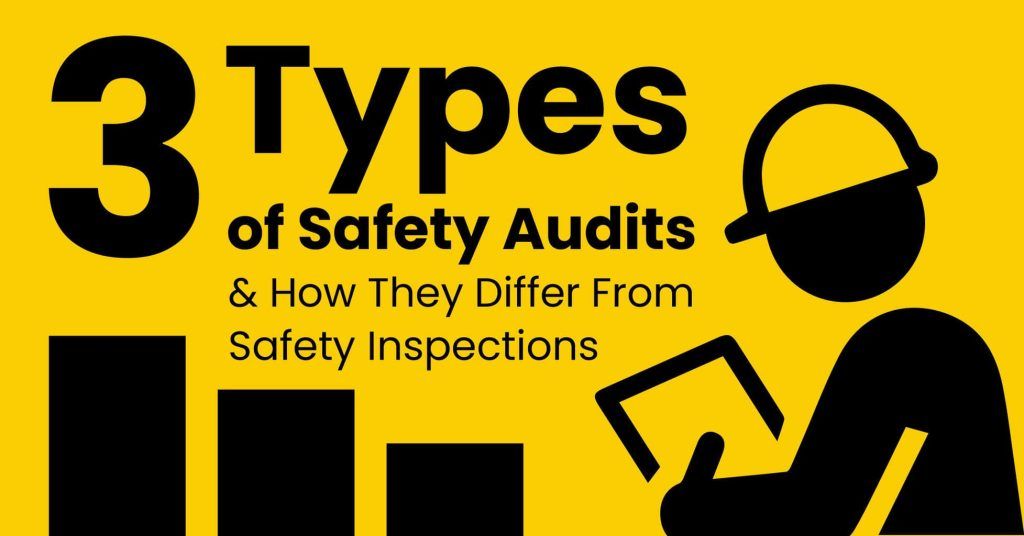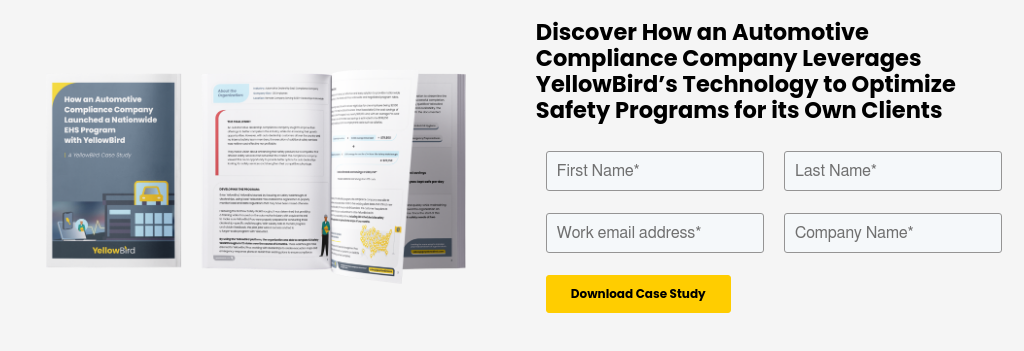3 Types of Safety Audits & How They Differ from Safety Inspections

3 Types of Safety Audits & How They Differ from Safety Inspections
Recently, we had a vendor ask for a YellowBird
Pro to come out to complete a workplace health and safety compliance audit, one of the many services our vetted and certified environmental, health, and safety (EHS) Pros provide.
The Pro was surprised to discover the vendor actually didn’t want an audit. What they were looking for was a safety inspection.
No problem, our EHS pro knew how to do both. But it brought to light the fact some organizational leaders in industries like manufacturing or construction may not be aware of the differences between a safety audit and inspection.
Most people know inspections occur via agencies like the Environmental Protection Agency (EPA) and the Occupational Safety and Health Administration (OSHA). But businesses can also conduct their own inspections to prepare, or seek out an audit to analyze their strategies and programs.
Both safety inspections and safety audits can help your business keep its workers and operations safe. But it helps to know the difference between a safety audit and a safety inspection, as well as the nuances among various types of safety audits, so you know what to ask for. That way, you can be paired with the right EHS professional for the job.
What Is a Safety Audit?
A safety audit is an objective analysis of the programs and strategies a business has in place to help keep the organization safe. Audits use set criteria like compliance regulations to make evaluations. Audits provide documented findings that an organization’s management team can implement to improve their systems.
Typically, audits are conducted from an external point-of-view, like that of an EHS pro. During an audit, an EHS professional will help your organization understand:
- How effective your EHS recordkeeping is
- Whether your programs and strategies are compliant with current safety regulations
- The effectiveness of your hazard communication
- What weaknesses are evident in your safety programs and strategies, including training documentation, incident and accident documentation, and policy/procedure reviews
Even organizations that are compliant may still have weaknesses. A safety audit alerts you to how to improve your programs and strategies so that you’re as safe as your organization can possibly be. Audits alert you to how to provide the most protection possible to your employees, worksite visitors and overall operations.
The following are some common types of safety audits Yellowbird’s EHS professionals can conduct for your organization.
1. Loss Control (Insurance Risk) Audit
A loss control audit examines how your programs and strategies can be improved to reduce the possibility a loss will occur, as well as how to reduce the severity of any losses that do occur.
This type of audit can reveal how much insurance risk your company poses. It may be requested by an insurance provider when they’re determining the rates to offer your organization.
Some industries are considered more high-risk than others. Depending on the safety measures you have in your programs and strategies, those may also affect how high or low your rates are.
By improving the safety of your programs and by implementing the recommendations from a loss control audit, you may be able to lower your insurance risk and rates.
2. Environmental Risks Audit
An environmental risks audit focuses on how an organization’s actions, strategies and programs affect the environment. These audits typically focus on emissions (gas, liquid and solid) coming from a business to ensure waste streams are being handled correctly.
Of particular importance during an environmental risks audit is if any processes or products have changed. If different chemicals or input variables are being used, then there’s also a high likelihood that emissions have changed, as well.
In addition to focusing on emissions, an environmental risks audit can help your business save money and improve efficiency. For example, you may be using more energy than you could be saving with a different method. An audit may also uncover hidden costs, like poor vendor choices or the overuse of a material.
Plus, when your organization uses an environmental risks audit to make changes to become more sustainable, you can highlight those changes in your marketing efforts, which may help you attract more customers.
3. Mock OSHA Audit
OSHA can conduct safety inspections at any time, without advance notice. While employers have the right to request an inspection warrant before allowing an OSHA compliance safety and health officer on-site, OSHA inspectors can typically get a warrant quickly and proceed with an inspection.
Conducting a mock OSHA safety audit BEFORE an inspection occurs prepares your organization to pinpoint risks and fix them ahead of time. There are different types of OSHA audits dependent on the industry an organization is in. Most OSHA audits will include a mock OSHA inspection and then an analysis of programs and strategies, like an OSHA safety plan, and how they can be improved upon to meet OSHA standards.
OSHA audits typically focus on OSHA’s most-cited deficiencies, as well as the safety hazards typically identified for the relevant industry that’s being examined. A mock OSHA audit helps an organization understand which items they should prioritize to help protect the health and safety of employees, contractors and visitors.
What Does a Safety Inspection Include?
Compared to the analytical nature of a safety audit, a safety inspection is an investigation of safety hazards and risks that could pose a threat to an organization operating safely. Safety inspections can be conducted internally or by using an external partner’s services, like those of an EHS pro.
During an inspection, an EHS pro will walk through a facility and look for dangers and unsafe actions by employees. Steps of a safety inspection may include:
- Looking for safeguards, safety signage and evacuation routes
- Examining equipment and chemical storage
- Observing work practices and employee safety behaviors
After an inspector identifies risks and hazards, an organization can work to eliminate those risks.
As mentioned before, OSHA conducts inspections, meant to identify vulnerabilities and violations at your organization.
Know What You Need. Get Exactly What You Need. With YellowBird.
Still not sure if your site calls for an audit or an inspection ? No problem. At YellowBird, we do both — and we make it easy to figure out which one is right for your team, your facility, and your goals. Our certified EHS and risk management specialists know the difference — and will guide you to the service that actually solves your problem, not just checks a box.
Whether you’re preparing for an OSHA visit, managing insurance risk , or just want peace of mind, YellowBird pairs you with vetted and insured professionals who get it done — fast. A safety audit today could prevent fines, reduce insurance costs, and even improve your marketability with customers and partners.


